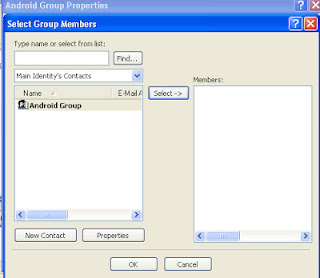Every
outlook user sends and receives emails by using their Outlook
account. Usually user of MS-Outlook 2010 & 2013 faces a common
problem while working with their account. When they try to send &
receive an email message using their account, all of a sudden a pop-
up window appears and displays an error message entitle as:
Error
Code: 0x8004010F Message1: “Outlook data file cannot be
accessed”
Or
Error
Code: 0x8004010F Message2: “The operation failed
error”
Common
Cause of Error: Configuration of profile is not appropriate
Solution
to cope up with “0x8004010F” error in Outlook
Before
you run any operation to troubleshoot the error, firstly check the
location of default Outlook data file (PST). After checking the
default location of PST file, create a new outlook profile.
User
Guide to locate the default Outlook data file
- Open Control Panel & hit on Mail.
- After opening mail in the Mail Setup option a dialogue box appears entitle as Outlook dialog box,
- In the dialogue box click on “Show Profiles”
- Choose your current Outlook profile & tap on Properties.
- Again in the Outlook dialog box hit on Data Files.
- Open the Data Files tab using Account Settings dialog box
- Now, note profile's default location.
- Process will complete after hitting on Close
User
Guide to create Outlook profile
There are
two methods to create new Outlook profile. Choose best method
according to your convenience. Here are full methods:
Auto
Account setup method to create an IMAP or POP3 email account.
NOTE:
Some user email account supports both protocol IMAP and POP3. In
this situation, auto account set up will create IMAP account by
default. If email server supports for POP3 account then profile will
be create in POP3 account.
To create
a POP3 account, follows the steps manually:
- Open Control Panel
- After opening mail in the Mail Setup option a dialogue box appears entitle as Outlook dialog box,
- Point to the General tab in the Mail dialog box hit on Add.
- After clicking on Add Enter text in the “new profile name”
- After entering text hit on OK.
- Type your email account information in the text box appeared in “Add New Account” dialog box
- Tap Next.
- Wait till account configures
- Tap on Finish.
Steps
to create an IMAP or POP3 email account manually
- Open Control Panel.
- After opening mail in the Mail Setup option a dialogue box appears entitle as Outlook dialog box,
- In the dialogue box click on “Show Profiles”
- Point to the General tab in the Mail dialog box hit on Add.
- After clicking on Add Enter text in the “new profile name”
- After entering text hit on OK.
- After adding account select settings of server
- Click on Configure settings manually & click on Next
- Choose Internet E-mail in the “Choose Service dialog box”
- Do click on Next.
- Type account details in the Internet E-mail Settings dialog box
- Now, test your account by clicking on “Test Account Settings”NOTE: If users don’t know correct account details then user must contact to their Internet service provider
- Browse to select Existing Outlook Data File
- Now, Open Outlook Data File dialog box
- Browse & select the Outlook data file which is located previously.
- Click OK & move to Next.
- Click on Close in the “Test Account Settings dialog box”
- Click Finish.
Steps
to see default Outlook profile in new Outlook profile
- Point to Mail dialogue box open the General tab
- Firstly click on check box to use this profile
- Tap on drop down Menu to choose new profile.
- Now, close the Mail dialog box
- Hit OK
By
following above mentioned steps, user will be able to resolve the
error without any need of technical expertise. However, if you are
still facing the same issue then you should contact to Microsoft
customer support.




































